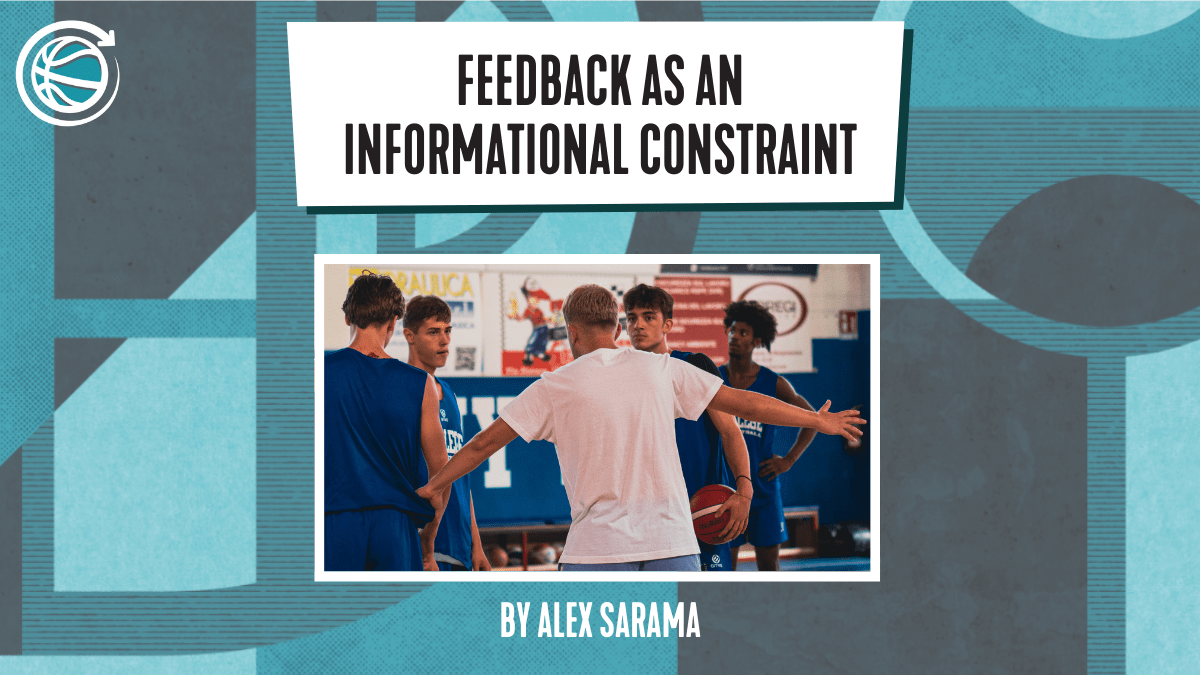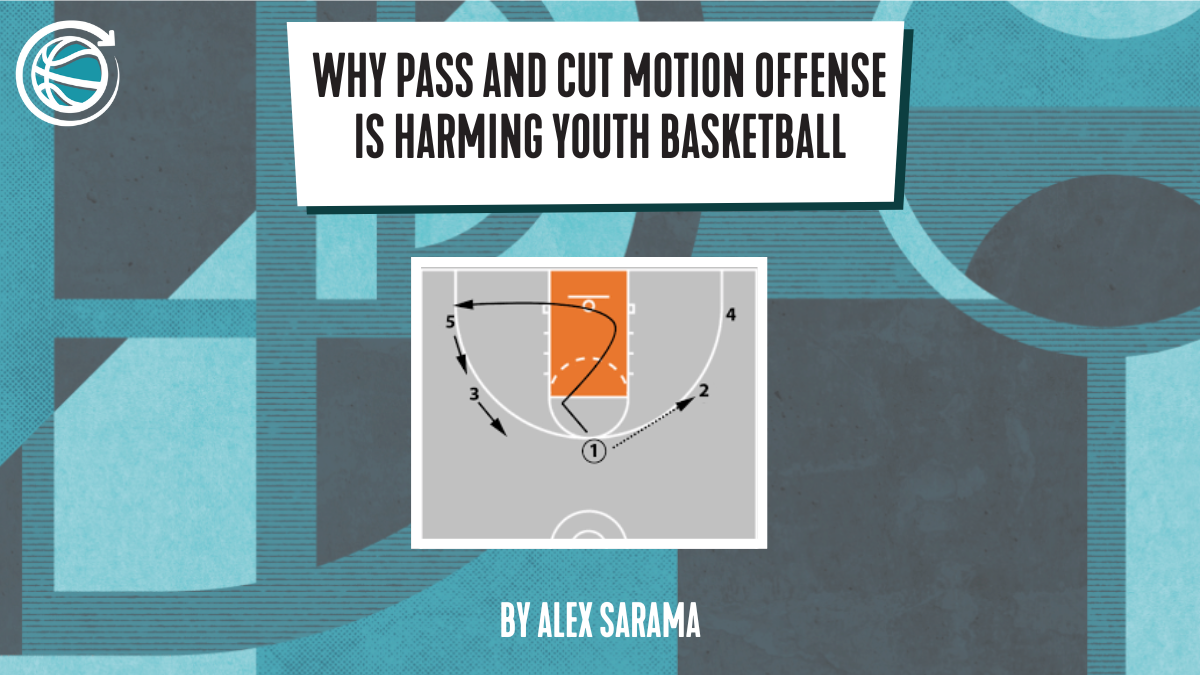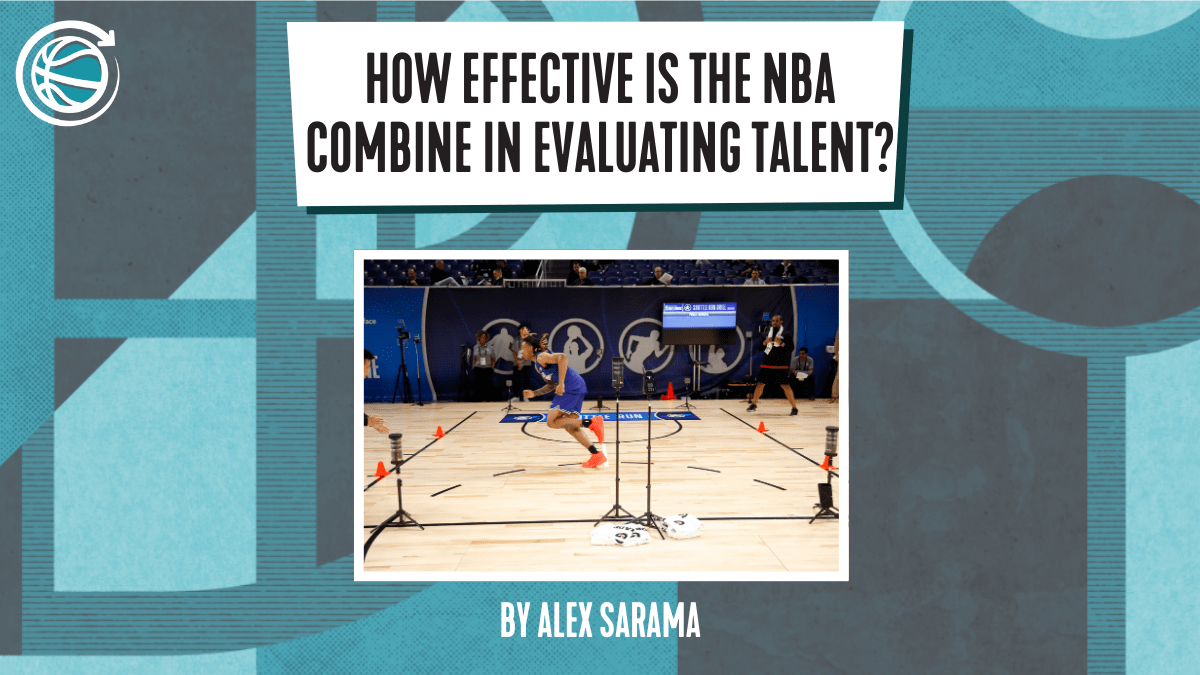How to Give Better Coaching Feedback & Informational Constraints
One of the biggest misconceptions of the CLA is that coaches cannot use feedback. Feedback is vitally important, but critically, through the CLA feedback is viewed as one form of task constraint. As such, it is not the type of feedback that we traditionally see used in basketball practices whereby the coach gives instant feedback and corrections based on how the players should supposedly move. Within the CLA, feedback can be a lot more open and explorative, encouraging players to attune to their affordance landscape while finding functional solutions which suit each individual player.

The first step in using feedback more effectively is asking the question as to whether or not the feedback itself is even needed? Within the CLA, coach and player interactions and questioning strategies may help the players place their attention on particular elements of their environment. Questions may be of an higher order than simple yes or no responses. Additionally, there may not be one correct answer that the coach is looking for. For example. “what did you notice about the weak side corner defender during the pick and roll?”
Frequently during the course of a practice, effective task constraints may be more influential than feedback. If the same or similar problems are consistently confronting a number of players, rather than giving feedback, constraints could be manipulated to amplify the problems the players are facing.
Much of the traditional feedback used within basketball would not be relevant within a CLA approach. Such common pitfalls include:
1. A reliance on offering internal feedback related to body parts, positions, hand placement etc. Research by Gabriele Wulf has effectively demonstrated the benefits of using external cues that take the focus of attention away from players focussing internally on specific body parts.
“Instructions or feedback promoting an external focus (i.e., a focus on the movement effect) have been shown to enhance learning, compared to those inducing an internal focus (i.e., a focus on the performer’s body movements). In numerous studies conducted over the past dozen years or so, learning advantages of an external focus have been found consistently for a variety of skills, age groups, levels of expertise, and non-impaired as well as impaired populations.” (Wulf, 2007).
2. Shotgun vs sniper feedback. Many coaches use shotgun feedback, with scattered pellets offering feedback on multiple things which few players ever remember. I advocate instead for the sniper approach: focussing on one or two key things which educates the intention/ attention of the player(s). This is extremely important for in-game coaching, as well as practices.
3. Higher order vs lower order questioning. Avoiding questions which give simple yes/ no responses, or which are rhetoric and sarcastic. If asking a question, give time for the players to think and answer. It can be challenging, but it also best to avoid filling the awkward silence or giving the answer before a player has a chance to speak.
4. Feedback should motivate and inspire players as opposed to making them anxious or fearful. This is why at Transforming Basketball, we are against transactional coaching styles. Effective feedback delivery may indicate how the coach has confidence and faith in the player, while expressing of focus on potential solutions as opposed to what the player is doing ‘incorrectly.’
ENROLL IN OUR FREE SKILL ACQUISITION WORKSHOP
5. One of the biggest occurrences is how too much feedback comes directly from the head coach to the players as opposed to being player to player. Creating a culture whereby players can give effective feedback to each other is therefore highly advantageous. De-briefs could be one tool in achieving this (lots of good content here from Mike MacKay).
6. Use challenges and aspirations. Challenge = “you’ve got that down now see if you can OR can you speed it up? Aspiration = “can you do it like Steph Curry would when coming off the pick”, “to become an effective NCAA player, this is something you might want to think about in this situation…” This concept comes from Doug Lemov, and could easily fit within an ecological approach to educate the intention/ attention of a team.
7. Removing emotion from feedback. Many coaches get upset when their players perform poorly in practices, and even more so in games, as they feel it reflects badly upon them. This is then reflected in feedback delivery, with general statements such as “what are you doing?” or even worse! Strong emotions simply make it much harder to offer effective feedback.
8. Aligned feedback. In many collegiate and professional practices that I’ve observed, I have been surprised at how random and chaotic the feedback delivery has been. In practices, there are commonly up to ten coaches on the sidelines, all shouting and offering different feedback points. Confusing or what?! I believe that world-class coaching includes planning for feedback, and anticipating some cues and feedback for areas that players may struggle with. In my practice plans, I designate feedback to particular coaches, assigning coaches to watch for particular things. If something comes up not in their focus area, then nothing is said or it is left to the head coach.
9. Simulate the game by not allowing instant feedback during the whole practice. Coaches frequently provide instant feedback in every task, where they stop practice activities to talk and provide instruction. The game doesn’t work like this. This is why I use bursts so frequently, as well as blasting arena sounds into my practices so that players have to find ways to connect and keep playing through challenging periods.
10. Tracking feedback. This is another idea from Doug Lemov. Keep a clipboard with the names of your players, writing down the feedback offered to each player individually and the wider team. This also allows you to think of better cues and analogies as part of the plan-do-review sequence (MVMT).
Learn more about plan-do-reviews in this podcast episode with Simon Turner…

Jun 24, 2024
Alex Sarama



